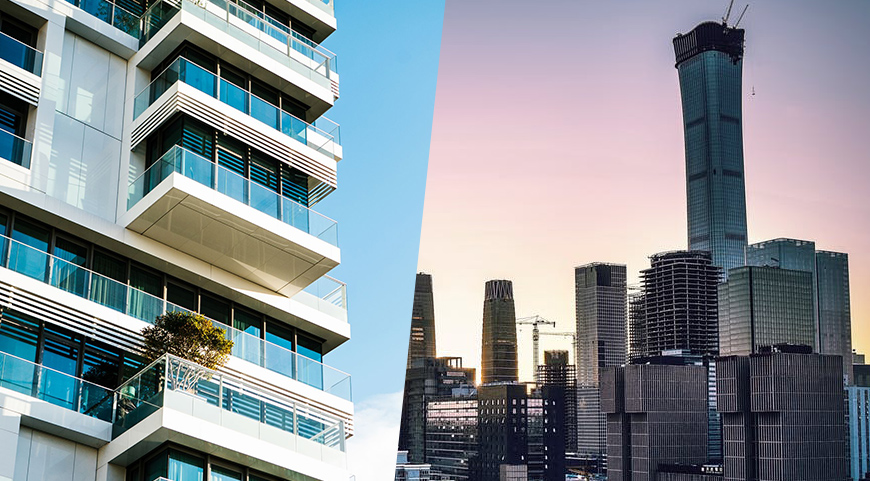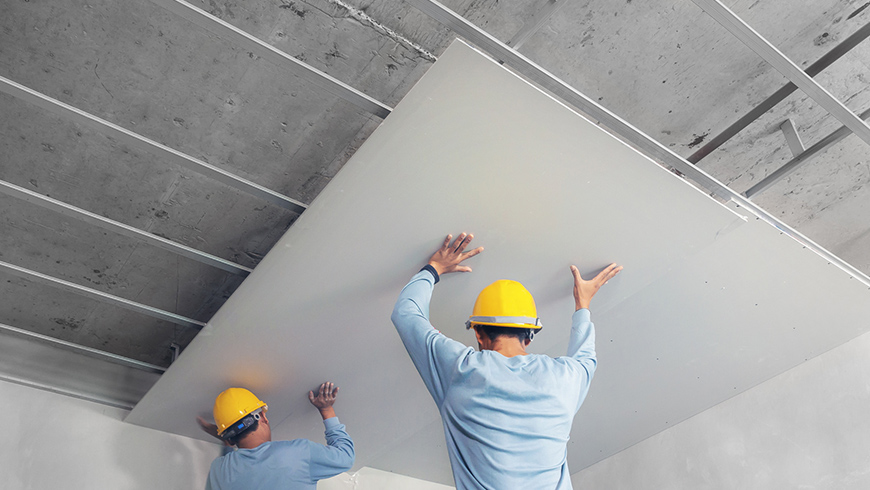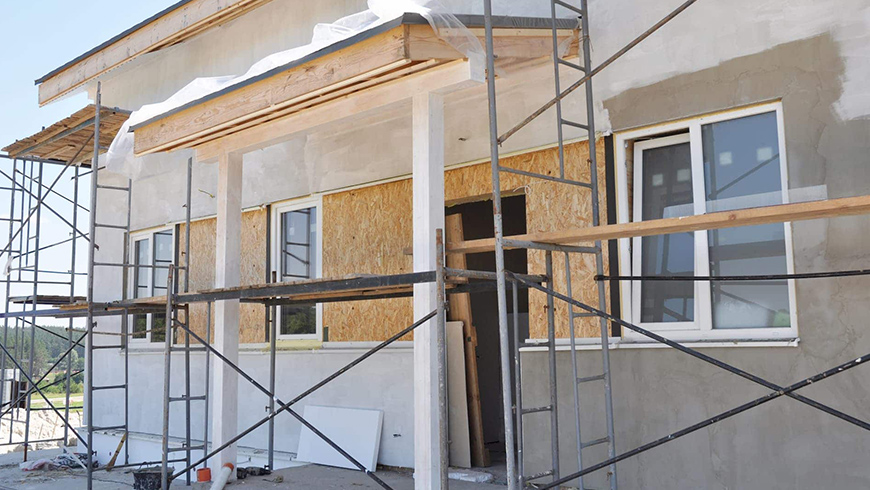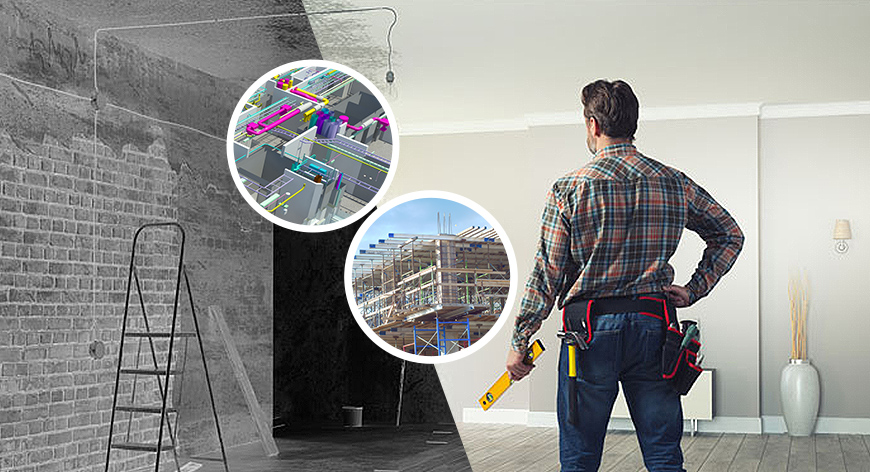
Role of MEP Design When Renovating or Repurposing Commercial Buildings
Lifestyle change, advancement in technology, and business practices have pushed the commercial real estate sector to renovate and repurpose their assets to the new needs.
Mechanical, Electrical, Plumbing, and Firefighting system play a crucial role in the effective functioning and service of commercial buildings. Each commercial building has its MEP design seeing the availability of space, usage, occupancy, etc. For example, the design requirement for an HVAC system is more demanding in offices than in warehouses unless certain products require specific temperature and humidity control. Also, to support an around-the-clock working environment in offices, proper lighting, as well as energy optimization requirements, are high.
From time to time, MEP engineers need to implement the updated government guidelines to meet the norms of fire & life safety, lighting techniques and energy consumption, energy-efficient HVAC system, updated provisions on water supply, drainage, etc. As part of MEP services, some primary MEP design recommendations brought due to pandemics are HVAC system with increased ventilation and filtration, usage of UV germicidal lamps, etc.

MEP Design of Commercial Buildings vs. Residential Buildings
Commercial projects are complex in design, customizability of design, construction, size, materials, and several other features. The main differentiator between commercial and residential design is their functionality and the intended use of space. The functionality of commercial and industrial units is extensive compared to residential buildings.
The HVAC system of residential and commercial buildings serves the same purpose, but they vary in terms of mechanism and parts such as size, placement, complexity, drainage, etc. For example, the commercial kitchen differs from a residential kitchen in the amount of food produced and generated smoke and grease. The exhaust hood system must meet stringent mechanical code requirements like the size of the kitchen hood, the amount of air to be exhausted, the hood material, and when and how the system needs to operate.
Commercial buildings have high energy needs, load demands, and equipment setup. Usually, a three-phase electrical wiring design gets created in these buildings. It reduces the load of each wire and enhances its efficiency.
Offices, retail stores, and other commercial and industrial buildings run multiple electrical lines, water supply lines, and switches or control systems. A detailed layout of the system design is crucial for accurate quantity surveying.
High-rise buildings use pressure booster pumps for hot and cold-water supply. And the buildings are separated into zones to maintain water pressure control. Sewage and foul water lines
Commercial, high-rise buildings, and industrial establishments mostly use the indirect gravity method for rainwater harvesting.
The firefighting system of commercial structures is more complex than residential buildings. Fire detectors get installed across the building, and sub-components are interlinked. Radio fire alarm, VESDA, and voice system get used as the fire alarm. Fire & smoke vents, fire protection systems like pump house equipment, automatic sprinkler system, etc., are also used.

Why MEP Systems Need a Relook While Renovation
MEP system of a building must integrate with its architecture and perform as required. While renovating an old building, the MEP system needs to get redesigned. It helps to optimize the building performance and minimize operational costs.
When the building gets old, new MEP facilities should get installed to meet the requirements and optimize the performance. Implementation of several energy conservation solutions in the renovation phase can help to reduce the energy usage by the MEP system. For example, incorporating natural daylight, installing sensors, and energy-efficient light fixtures can decrease lightning consumption by 20 to 60 percent. Also, the best automation techniques can help the HVAC system for energy conservation.
Extension of offices or any building also requires a change in its MEP plans and layouts. The MEP layouts of the extended part of the building must coordinate with the original building for optimum performance. It helps in the detection of any clash between the system components.
Repurposing a building such as an office into a warehouse or a residence requires MEP changes. The lightning and HVAC requirement of a warehouse is simple than an office. Therefore, upgrading the HVAC system and LED lighting can help to save energy and cost. When open offices get converted into apartments, it requires individual MEP installations for each apartment. Separate electric panels and dwellings are needed. And plumbing installations require more changes.
Repurposing, extension, or renovation of a building needs to meet the building code specific to the region. The MEP system needs to meet the government regulations related to retro fittings, water treatment systems, energy conservation requirements, sustainability, etc.

Benefits of MEP Designs When Renovating or Repurposing Building
Renovation and repurposing of a building is an investment decision made by the stakeholders to remain profitable. And MEP design is crucial for any project, as it has a high impact on its performance, efficiency, and productivity.
MEP design benefits a renovating or repurposing building in several ways.
Maximizes Energy efficiency
MEP consultants analyze the current energy consumption of the building through energy modeling. A virtual simulation of the building’s energy usage helps in suggesting energy-saving solutions to optimize the building’s energy efficiency.
HVAC equipment can be replaced with high-efficient HVAC units or retrofitting. For example, several retrofitting for air conditioning are replacing the compressor, adding condenser fan controls, adding demand-controlled ventilation, or adding air-side economizers that utilize the cool air outside.
Lightning retrofits, LEED designs, or other resource-efficient designs can also get used as an energy efficiency measure.
Use of natural and alternative source of energy
The use of various renewable energy resources like solar, wind, and geothermal can reduce energy consumption by building.
Solar electric or photovoltaic systems use sunlight to generate electricity. The building integrated photovoltaic (BIPV) products such as thin-film solar PV Shingles are usable during renovations.
Solar water systems and solar ventilation preheating systems can generate hot water and air. It will help in reducing the cost of electricity and the associated environmental impact.
A proper wind flow analysis with possible design changes will help to utilize natural ventilation and reduce energy consumption.
Water Conservation and reduce Water wastage
Water conservation technologies like greywater recycling systems and rainwater harvesting systems can be installed in buildings to save water. The greywater harvesting system helps maximum utilization of water.
The system collects the water from basins, baths; and reuses it for toilet flushing other external use. Rainwater harvesting system collects the rainwater from large areas and uses it for several purposes.
Changing existing plumbing fixtures with water sense products such as water meters, pressure reducing valves & insulted pipes, efficient taps, etc., can help in reducing water wastage.
Cost Optimization
An improperly planned MEP layout results in excessive use of materials while installing the air ducts, cable trays, electrical conduits, and plumbing lines. It increases the number of materials, labor costs, and time.
MEP engineers can use software like BIM for analyzing how design changes affect and the scope of work and perform an automatic calculation. A precise MEP layout reduces the material cost, labor cost, and overall project cost.
Reduces future clashes and costly construction mistakes
MEP coordination is one of the biggest challenges as it is a complex system. Precise MEP design using BIM software avoids the design clashes and minimizes the chances of clashes among mechanical, electrical, or plumbing lines. Specified construction documents and at the time of construction prevents any confusion. Thus, additional cost expenses due to construction mistakes and future change orders reduce.

Challenges in Renovating Commercial Structures
Each commercial building is unique in its structure and its MEP system. MEP engineers and designers need to encounter several challenges in planning, designing, permit acquisition, construction, and installation while renovating commercial structures.
Understanding the existing systems
MEP is a complex and highly coordinated system and uniquely planned for each commercial or industrial structure such as healthcare, offices, warehouses, retail stores, or industrial establishments. The MEP system layout, coordination of the mechanical and electrical units, detail of their configurations, fragmentation of their responsibility, etc., is a big challenge and requires specialized MEP consultants.
It is essential to understand the existing mechanical, electrical, plumbing, and firefighting installations of the commercial structure to optimize the building performance and save cost.
Aligning the new requirement to the existing system
The newly-planned and designed MEP system must meet the new requirement and integrate into the existing MEP structure. And to bring change such as sustainability, energy efficiency, reduction in cost, and desired performance, the existing MEP structure needs to be analyzed meticulously. And any layout changes must be aligned to the existing structure.
Knowledge of the standards and practices
To bring any MEP changes, engineers and contractors must beware of the building codes for the respective region. The knowledge of building standards helps in making the MEP changes according to government rules and guidelines. And get the permit for construction without any hassle. Failure in permits brings several challenges to the local authorities and delays the project.
Access to advanced tools and software
Software and tools for the MEP segment continuously evolve. Access to these tools and technology helps MEP engineers to improve their accuracy and optimize the building system. These tools facilitate early model coordination and ensure no clashes in the building system. Access to these technologies is a challenging task for the project team. These technologies come with a good amount of cost.
Experience in advanced technology and MEP systems
Experience in advanced MEP technology and MEP systems helps create efficiencies, reduce error and waste, and accurate MEP design and installation. MEP engineers need specialized knowledge of the process piping, HVAC piping, HVAC ductwork, plumbing, electrical, and firefighting is required for designing, installing, commissioning, and maintenance of complex buildings and plants.
Requirement of support and maintenance guides by the project teams
Project teams require the support and maintenance documents of the MEP components. It helps them guide, manage, and fix the issues and maintenance of the HVAC units, plumbing fixtures, and electrical circuits.
MEP planning, design, installation, commissioning, and operations is a specialist job. Large commercial and industrial projects require MEP specialists to plan and design their MEP system customized to their architecture, business, and requirement. Professional assistance helps in designing the MEP system as per codes and standards. Their cost-effective approach helps in saving money and optimizes the building’s performance.
MSK Consultants for Precise MEP Designs for Commercial or Industrial Structures
MSK is a specialized architectural, structural, BIM, and project management consulting service provider. The organization is handling several large commercial and industrial MEP projects for new builds, renovation, or repurposing. We are using advanced technology and software for MEP design and installation. Our MEP specialist provides customized, precise, feasible, and best MEP solutions to clients.
Contact MSK Consultants to get the best MEP support and solutions from our experts.
